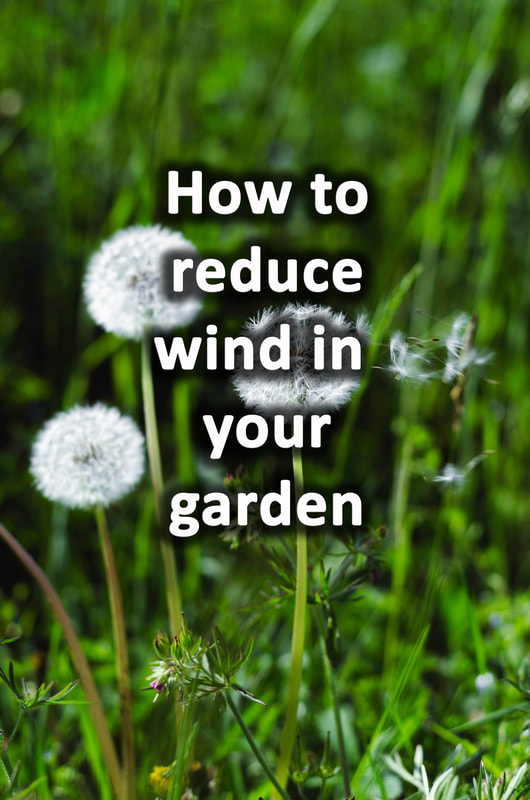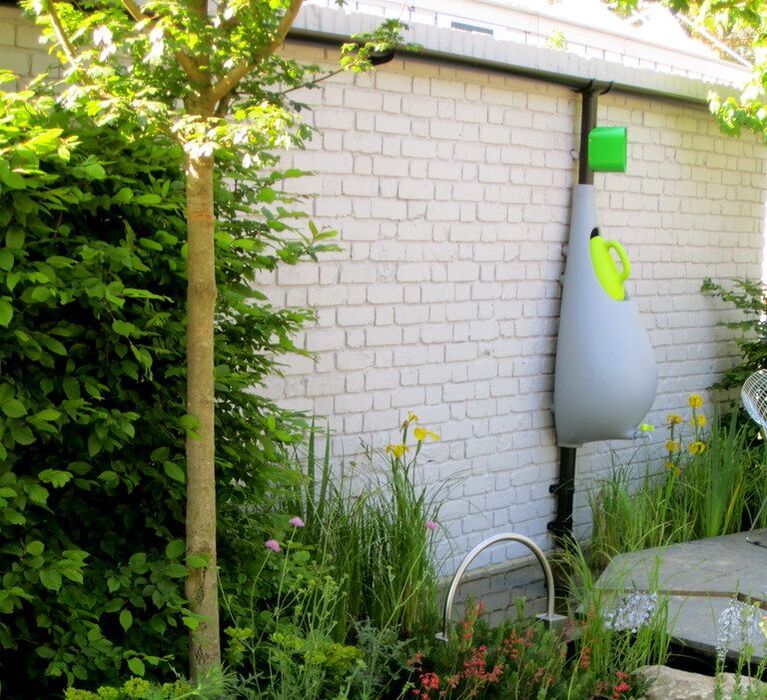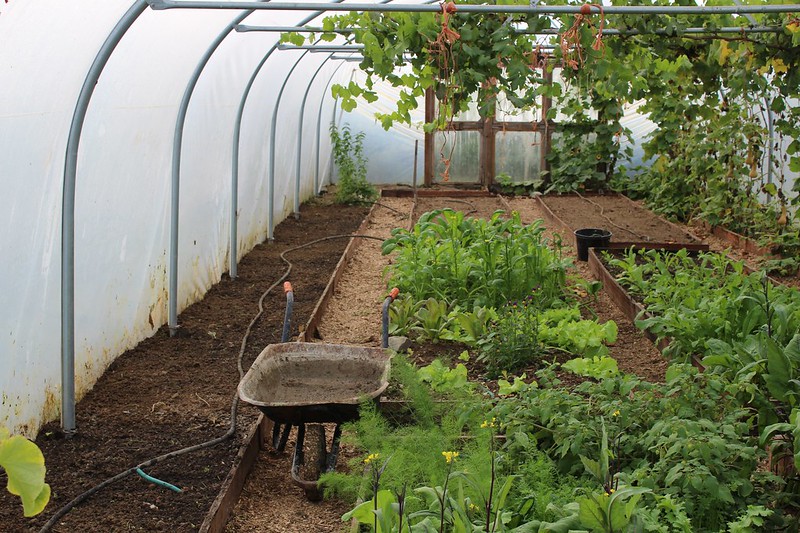|
This article contains affiliate links
Windy conditions can affect some gardens more than others depending on your region or topography. Exposed sites will have days of high pressure with no wind but this will not always be the norm.
If you have a noticeable, reoccurring problem with wind in your garden there are some familiar scenarios. Typically windy gardens are situated in regions with exposed or elevated landscapes. Also areas with defined prevailing wind orientations will suffer discomfort from wind. Lastly you may happen to find yourself in a wind funnel or wind corridor. This is where external features such as landform and buildings funnel wind and air pressure through your garden. In any case you do not have to sit and suffer! Normally there are series of steps and installations which can reduce wind in your garden. DiagnosisThe most important factor for reducing wind in your garden is diagnosing your specific problem. Do you have persistent gusts from a specific direction? Does a nearby building or hillside funnel wind into your direction? You will need to take note of where wind is at its strongest on your site. Try to work out where your main problems are and what is causing them. If you live on the very top of a mountain you may need to except that even calm days may be breezy. However most of the time there are two main scenarios; you have a specific area you want wind free or wind gusts come from a specific direction. More often than not you will need to erect a physical barrier to either block or redirect the winds direction. Physical barriers
When it comes to reducing wind in your garden physical barriers can be very effective. These can come in a wide variety of forms but usually take the form of a fence or wall. For wind corridors with very strong, prevailing, winds brickwork and concrete walls provide a sturdy solution. However simply attempting to block out wind head on can provide its own issues. When strong wind hits a strong, physical, barrier it is forced up and over causing turbulence. This turbulence can cause gusts just as uncomfortable as the prevailing wind itself. This turbulent action is common when you implement physical barriers to wind head on. Dealing with turbulence
In order to deal with turbulence you will need to plan your physical barriers strategically. Instead of erecting wind blocking structures head on, barriers should aim to channel wind away. Try to think about how wind can be deflected instead of physically stopped. Perhaps curved structures or built up landform can be incorporated into your garden design. Alternatively the best way to reduce turbulence is to try to absorb the forces of wind. Instead of creating a physical barrier to act against the forces of wind allow the air pressure to be diffused gradually. Absorbing wind
The best way to absorb wind and weaken oncoming air pressure is to filter it through gradually. This is best done with natural vegetation such as trees, hedgerows and dense planting. This is how shelter has been installed into the agricultural landscape for centuries. However it is important to recognise that if you have a small garden it is a difficult strategy. As wind energy has to be gradually slowed down over distance your site may not be large enough to accommodate wind absorption. Absorbing wind energy this way is certainly a part of a wider landscape strategy for mitigating wind. Shelter belts
Shelter belts are the most common and traditional methods of reducing wind within the landscape. These comprise of hedge and tree plantings which slow down wind gusts as they travel through. On large tracts of farmland poplar trees are planted for this purpose as they have a feathered form. On a garden scale however a finer textured foliage is best to absorb strong winds. Most gardens may be too small to incorporate shelter belts in their true sense. Hedges
When attempting to reduce wind in your garden hedges are an effective and realistic option. Evergreen species such as yew and leylandii can form dense hedges which both absorb and slow down strong winds. However it has to be stated such hedges do take a considerable time to establish properly. Furthermore growing large hedges can dramatically reduce the width of your garden at its boundaries. This is because robust, hedge species grow broad sides and bases as well as straight up. However for most gardens such hedges are an effective way to reduce wind within your garden. Planting
Just as hedges can be effective wind barriers some planting types can also have a similar effect. Tall and flexible plants like bamboo can be a great at softening strong wind gusts. Bamboo has the added benefit of creating rustling sounds in the breeze. This is also the case for larger reed grasses like Arund donax and Giant Miscanthus. Pampas grass has also been shown to be effective at absorbing and dispersing wind. This is also the case with large shrubs with compact, evergreen foliage like Choysia ternata and Viburnum tinus. Fencing
When it comes to reducing wind with fencing you have a few options. Most gardens already have some sort of fencing around their perimeter. If anything traditional timber fences exposed to excessive wind tend to collapse when the bases of posts become degraded. To give you the best chance of withstanding wind try to use concrete or metal posts where possible. However it is often the case conventional fencing is not enough to reduce wind. Furthermore local planning laws prevent you from building up fences too high.
However you can build high trellis screens further into your fence boundary. These can normally be erected higher than the fence boundary itself with evergreen climbers growing over them.
As long as these are built securely they can dramatically reduce wind and block out bad views. The best fencing for blocking out wind is fencing which allows some wind to filter through. The best examples of these are slatted fences and woven willow panels. Pergolas
If you have a specific location in your garden you want to keep as wind free as possible, pergolas could be a great option. These are particularly effective if you wish to create a sheltered seating spot or dining area. Traditional pergolas are open on all sides but you could block off one end to divert prevailing winds. This can be done with timber trellis or a tall, raised, bed with plants.
The great thing about pergolas is they can be custom built to your needs. This makes them easy to incorporate into a garden wind reducing strategy.
If you have prevailing winds which blow from one direction, linear pergolas can be erected along that side. These can be used to frame a pathway or route around the garden. The structure can then have extra wind barriers attached or covered in evergreen foliage. Polytunnels
Polytunnels are a great way to provide wind free conditions in your garden. Particularly tender plants do not like to grow in windy and unsheltered conditions. Hence there are some species you may wish to consider growing inside a tunnel. The great thing about polytunnels is they are considerably larger than greenhouses. This means you can create a whole garden zone undercover!
Perhaps you would like to start a tropical garden in one part of your site? Alternatively polytunnels can enable you to raise young plants until they are strong enough to resist windy conditions.
Just remember if you have a particularly gusty site your tunnel will need to be anchored sufficiently. Take advice from your supplier on how to erect their product in windy gardens. Groundworks
Gardens are normally affected by excessive wind due to topography or landform. consequently it makes sense to consider this a potential solution for windy gardens. By lowering areas down into the landscape you can allow wind to travel over the top of you. You can also use aerodynamic mounds and land form to steer wind away from you. For most small gardens this may be quite logistically difficult especially on narrow sites. However a combination of sunken areas and raised beds with planting can dramatically reduce wind in your garden.
Thank you for reading our article on how to reduce wind in your garden. If you found it useful why not share it via the tabs below. If you have a specific question leave it in the comments for me to respond. Thankyou!
'As an Amazon affiliate I earn from qualifying purchases'
0 Comments
Leave a Reply. |
The Author
|
Landscaping services across Buckinghamshire, Amersham, Aylesbury & High Wycombe
Hyde Heath, Amersham, Buckinghamshire |
|














